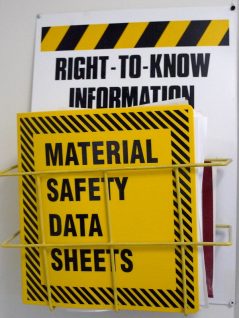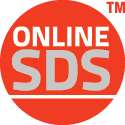MSDS vs SDS: Key Differences Explained for Safety Compliance

OSHA updated its rules in 2012 regarding the use of SDSs to ensure that businesses always use the latest version of MSDSs or SDSs. As OSHA has now replaced all MSDS terminology with SDS and the U.S. uses the Globally Harmonized System (GHS) as a legal baseline for its regulations, all labels and SDSs must match their style.
However, the new system may confuse you if you are not aware of the differences.
Below, we elaborate on what is unique about MSDS vs. SDS systems, allowing you to understand the new requirements better. So, read on for safety compliance tips on where you may need to update your business’s safety documents. Discover how KHA’s Online-SDS could be perfect for you to get up-to-date quickly and robustly.
Key Differences Between MSDS vs. SDS
Before the update to SDS systems, MSDS pages did not use a specific template. Any creator could decide to develop an MSDS that followed their own beliefs about the most important data, potentially causing confusion or missed chemical safety information. As these documents relate directly to protection from danger, OSHA decided to make a new ruling.
Manufacturers and handlers of chemical substances must now ensure that they update their SDSs to match key labeling requirements. OSHA has also offered more specific guidelines on areas such as:
- Chemical substance classification
- Labeling rules
- Communication of chemical hazards
- Use of safety data sheets
This standardization effort eliminates potentially vague phrasing and labeling, which was once much more common in MSDS. As such, the following areas now have a unified system of:
- Formatting
- Section ordering
- Terminology
- Labeling requirements
- Clarity
- Comprehension
- Hazard classification
These changes bring them up-to-date with the Globally Harmonized System, a program organized by the United Nations to ensure the safe transportation, disposal, and use of chemicals using clearer communication.
Supplier Updates
Along with the requirements of how an SDS appears, they must now be fully updated with each iteration. Distributors cannot offer partial updates and addenda, forcing users to update their documents manually.
Alongside a requirement for immediate digital access on request, an online database is becoming more appealing with every update to meet OSHA requirements.
Modern SDS files, such as those used by KHA’s Online-SDS system, also include version histories. With these, staff can always access the latest version, while auditors can see what was available after any incidents.
Access to databases like these makes it even more helpful for staff working in multiple locations, where physical binders may be misplaced or moved.
SDS Requirement Details
Modern SDSs have specific sectioned information that matches the latest regulatory compliance standards. This update means you can always know where to look for what you need whenever you use one. The complete list of data sheet sections is comprehensive, but under OSHA standard 1910.1200, it needs to appear in a “consistent user-friendly, 16-section format.”
At the same time, the standardization of SDSs is not limited to text. Instead of custom MSDS icons or ambiguous meanings to what each denotes, there are now nine standardized pictograms set with red borders. These are easy to see and carry more specific meanings.
Various words used in the SDS now have precise nuances, too. These include examples like:
- Flammable
- Oxidizer
- Carcinogen
- Danger
- Warning
Exact PPE and storage methods are now also defined by using specific, unique phrases, reducing the possibility of ambiguity when reading. Such consistency helps your business too, as foreign companies should also use them, allowing you to refer to them when there may be language barriers.
These steps help the SDS to align with the labelling needs of groups like:
- OSHA
- KOSHA
- EU CLP
- United Nations
- REACH
- HSE
These harmonized requirements can also help you reduce the time needed for retraining when bringing on new people from other companies or countries.
Why Shifting to SDS Will Help You
As the world switches to SDS systems, aligning with other businesses is likely to significantly reduce trade delays that may occur due to:
- Incompatible classifications
- Confusion due to non-standardized wording
- Fines due to the use of legacy MSDS
- Older data may omit new chemical hazards and expose workers to risk
- Faster integration with software platforms
- Difficulty with cross-border trade due to customs
- Missing or duplicate data in physical MSDSs could confuse processes
In short, you will fall behind if you choose not to update, and may put your company at risk. You may also find that you no longer meet the requirements for certifications, such as ISO 45001, which require you to align with the GHS for audit compliance purposes.
For these reasons, OSHA takes following its requirements extremely seriously. You may face a fine of up to $16,550 for each missing SDS. However, should OSHA determine that any person was willfully negligent in changing their system after learning of the change, they may increase that to $165,514 per violation.
At the same time, violations such as these open you up to litigation and the potential for major reputation hits, causing long-term problems for your business.
Using KHA’s Online-SDS for Ongoing Compliance
Software from KHA allows you to integrate a complete SDS database into your business, giving your staff immediate access to instantly updated SDS data at all times. Alongside an easy-to-use user interface, it offers a simple and effective way to comply with U.S. and international requirements, helping you avoid delays and fines while enacting comprehensive workplace hazard management.
With instant mobile access using KHA’s Load-N-Go system, your team can ensure they always have what they need without manually sifting through paper SDS records.
Drive Your Company’s Safety Compliance Forward
An outdated MSDS system not only invites costly repercussions, but it also puts your workers in jeopardy. Instead, with a clear and regulated SDS format, you can ensure that your business is on par with others in your industry. The better option between MSDS vs. SDS should be obvious.
It’s time to speak to KHA and ask about our SDS management system. Our software and support can scale to your operation, giving your team everything they need. So, get in contact today to learn how to give your workforce what they need at every step.
